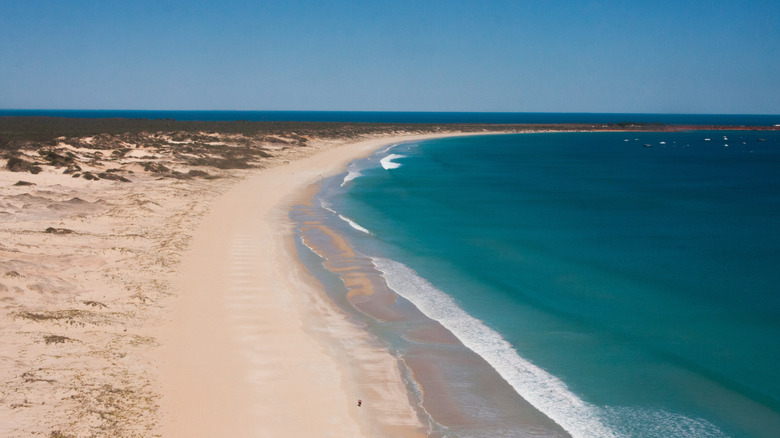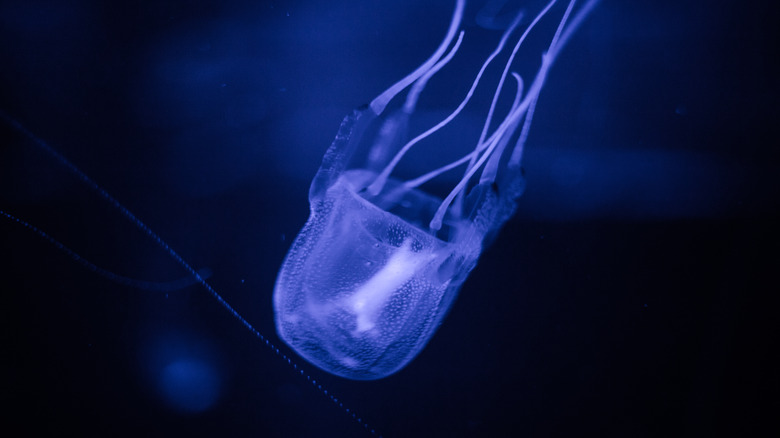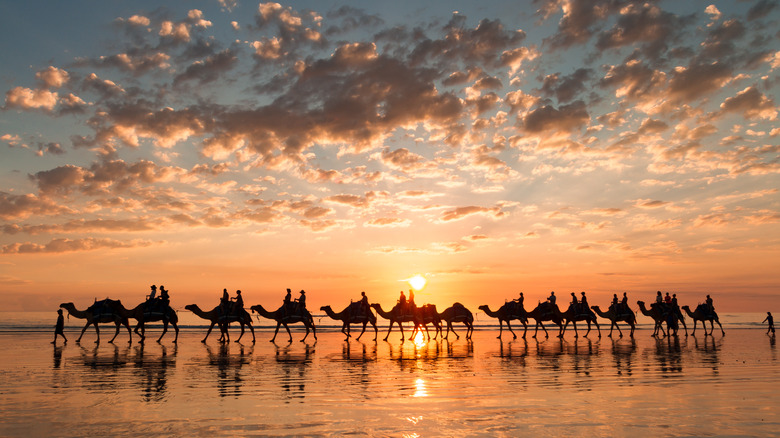Watch Out For Creepy Creatures At This Popular Australian Beach
Beaches are about sun, surf, sand, and summer (and sunscreen). A trip to the shore is a lovely way to spend your vacation or even a day off. However, the beaches in certain parts of the world have some dangers that you have to be wary of. If you know anything about Australia or have been there for a visit, you probably know that there are animals to look out for. People who live there deal with them all the time, of course, and as long as you're careful, you can cut down on the risk from the dangerous ones.
There is a beautiful beach in Western Australia in Broome called Cable Beach. It's very popular with tourists, and people do swim there. If you want to be one of them, or at least make an informed decision about whether or not to swim, we've got all the information you need. Some of the animals in the water (and sometimes on the sand) can hurt you, and some can actually be fatal to humans. Let's take a look at what to avoid and how to stay safe on Cable Beach.
Box jellyfish on Cable Beach
You can keep yourself safe if you stay vigilant and follow all posted signs at Cable Beach. First, let's talk about when to go. There are lifeguards on duty from April to October from 9 a.m. to 4:30 p.m. You should swim only between flags that are both red and yellow. If you see solid red flags, the beach is closed and you cannot swim.
The biggest danger on Cable Beach is the box jellyfish. You can see one in the picture above, but they're pale blue and clear (this one has blue light on it), meaning they can be hard to see. Box jellyfish show up during the wet season, from November through April. They can be up to 10 feet long and 10 inches across. Their venom is incredibly toxic, and if they sting you, you can die from heart issues and/or shock before you can get back to the sand. If you survive, the pain can last weeks and give you scars. This is no joke. Do not swim during the wet season. It's not worth the risk. Plus, they don't just float like many other species. They can move deliberately, and their tentacles are very difficult to spot. If you're on the shoulder of the season, it's worth wearing a stinger suit, which covers the body but is lighter than a wetsuit and lets the tentacles slide off rather than stick.
More things to know about Cable Beach
Shark attacks are rare here, with only three recorded and one death in 2020. There are a number of species in the area, like tiger sharks, bull sharks, and white pointer sharks, but there are precautions you can take. Avoid swimming in areas where people are fishing, and spots between sandbars and the shore if they're deep. You can also avoid swimming at dusk or dawn when sharks generally feed. Don't wear things that are shiny because they can look like sunlight on fish scales. If you do see one, punch at its gills if you can, maintain eye contact, and swim away slowly.
Saltwater crocodiles are also a danger though they do tend to prefer more protected areas. If one is seen, the beach will be shut down for a time. One thing to remember is that even if you don't see them, they can be under the surface. Like box jellyfish, saltwater crocodiles are much more likely to be seen during the wet season. You could even see snakes here, like the venomous olive snake one man saw there on the sand. It's very rare to encounter one, however, but if you do, don't touch it.
During the wet season, try other activities like the popular sunset camel ride on the beach, which even includes a carrot to feed your new friend. There are also helicopter tours, sunset cruises on a sailboat, and whale-watching trips. Finally, don't laugh, but many people are injured by falling coconuts from coconut palm trees, so don't sit under them.


